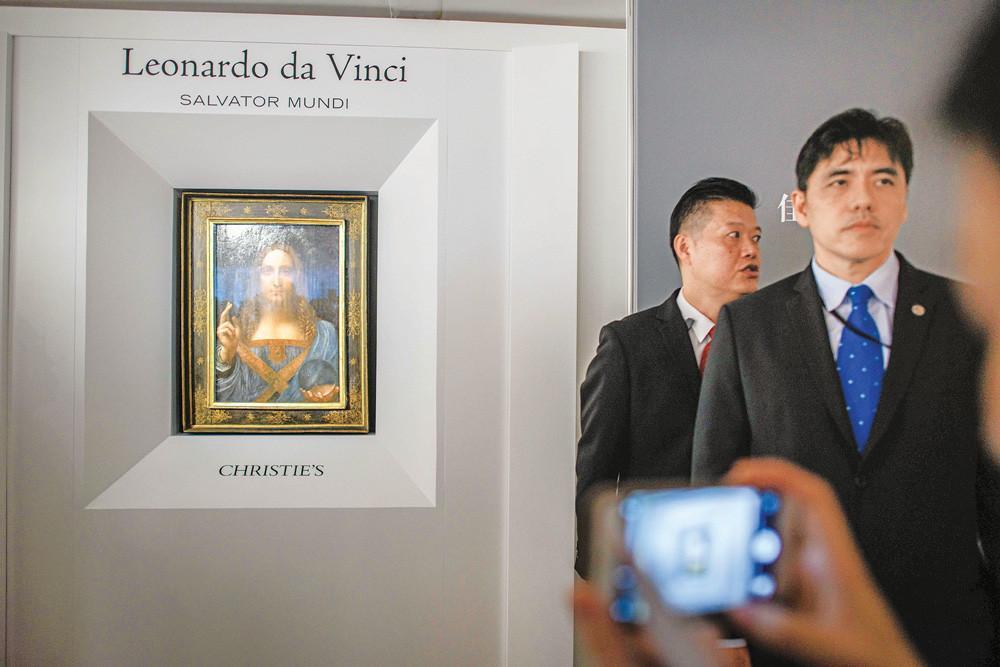
The works of great artists buoyed the art market last year and none did more than Leonardo da Vinci, whose 'Salvator Mundi' sold to great fanfare for $450 million in New York in November.
Global art sales grew 12 percent to an estimated $63.7 billion after two years of falling sales, said a report published by UBS and Art Basel on March 13.
That still fell short of the record of over $68 billion set in 2014 and below $66 billion achieved in 2007 before the art market plummeted during the financial crisis.
"Industry-wide gains were driven by sales at the top end of the market," said cultural economist Clare McAndrew, who wrote the report.
Over the past decade, auction sales have fallen for works priced under $1 million, making investment purchases a risky gamble for the lower and middle price segments. But purchases of ultra-expensive artworks soared in value, with the study finding a 148 percent increase in total sales value of works sold for over $10 million at auction over the last ten years, and a 125 percent increase over just one year.
Indeed, the study found that just 1 percent of artists whose works were offered at auction accounted for nearly two-thirds of the total auction sales.
Art experts remain wary of speculative purchases at a time when the world's wealthy, waylaid by political and economic uncertainty, are eager to place cash.
The research indicates that, like wealth, half of which remained in the hands of the top 1 percent in 2017, the art market has become top heavy.
The Salvator Mundi painting was only recently rediscovered after being sold at auction for 45 pounds, attributed to one of Da Vinci's students, in 1958.
Art dealers took a gamble on the damaged and partially covered work, paying $10,000 in 2005 before restoring and verifying it for an $80 million resale in 2013. It was flipped to Russian billionaire Dmitry Rybolovlev for $127 million later that same year.
2017 also set a new record for the late American artist Jean-Michel Basquiat whose untitled painting sold to Japanese entrepreneur Yusaku Maezawa for $110.5 million in May. A work by Roy Liechtenstein fetched $165 million in a private sale.
Top heavy
"Away from this premium segment, performance was not all positive, with many businesses coming under pressure," McAndrew said.
"This divergence in performance is a continuing concern, particularly as the majority of employment and ancillary spending comes from the very many other businesses in the art trade below the top tier," he said.
The largest art markets were also those with the highest numbers of millionaires, with the five largest markets accounting for two-thirds of the world's millionaire population.
Research by UBS, which banks half the world's billionaires, also found a growing engagement amongst the world's very richest with art.
In a survey conducted with the bank's U.S.-based clients, the world's largest wealth manager found that over a third of the high net worth individuals - or those with personal assets over $1 million - were active in the art and collectibles market.
While only a third of the collectors placed emphasis on financial return in their collecting, that increased to nearly half for those with wealth over $5 million.
The rapid growth of China's economy and rising wealth over the last two decades helped fuel the art market, the report found, with China overtaking Britain as the second biggest art market following the United States.
Further growth in Asian economies could be expected to fuel more collecting over the next five years, it said.